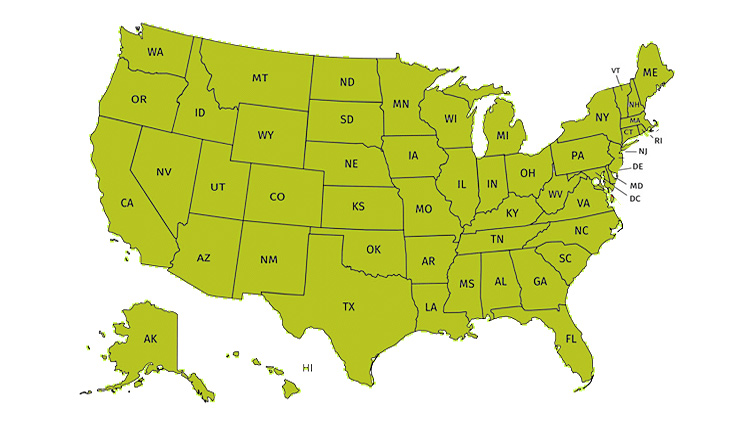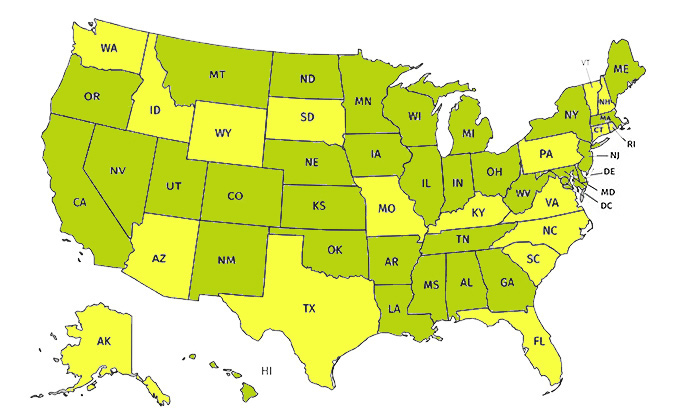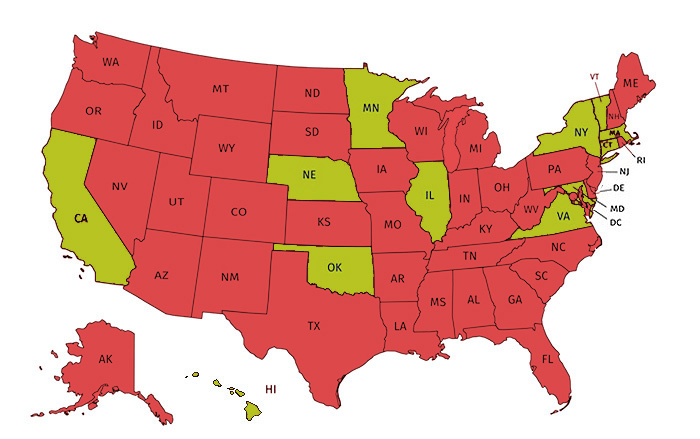Today, all 50 states have some form of legislation regarding sport-related concussion.1 Because such policies vary widely, physical education teachers and other school personnel should take the time to understand their state and local concussion policies in addition to their school policy.2 Typically, this information can be found through each state’s official government website.
The following images provide a quick overview of several components of state concussion policy. This information is current as of June 2017.
As of June 2017, 48 states require that students suspected of sustaining a concussion be removed from play for the remainder of the day, or 24 hours. Arizona and South Carolina allow such athletes to return to play the same day if cleared by a healthcare professional.
The consensus from the Berlin Guidelines is for a graduated return-to-play strategy, typically of five days.3 Two states mandated longer periods of time for returning to play (California, seven days; New Mexico, 10 days).


Clearance can be given only by licensed physicans (MDs or DOs).

Clearance can be given by select providers only.

Clearance can be given by any provider trained in concussion management.
As of June 2017, all states require medical clearance before a student may return to play. Physical educators should learn what kind of healthcare professionals are legally allowed to provide medical clearance in their state. Note: Some states specify that such clearance is to be written, while many states do not.
Education Requirements


Require some type of concussion awareness or education.
As of June 2017, all states require some type of concussion awareness or education, although many of the requirements are ambiguous as to who should receive such education and how often. Concussion-education requirements for students, parents, coaches, healthcare professionals, physical educators and referees vary from state to state. It is important for physical educators to learn and follow their state and school policies regarding concussion education.
Types of Schools Affected by State Concussion Legislation


State concussion legislation affects both public and private schools.

State concussion legislation affects public schools only.


State concussion legislation affects grades K-12.

State concussion legislation affects middle school and high school only.

State concussion legislation affects high school only.
As of June 2017, about 25% of state concussion laws applied to only public high schools, another 25% applied to public middle and high schools, and 50% applied to all grades (K-12). Only about 20% of state concussion laws applied to private and charter schools.
Return to Learn


Concussion laws include language regarding return-to-learn policy, either in original or amended legislation.

Concussion laws do not include language regarding return-to-learn policy, either in original or amended legislation.
As of June 2017, 12 states had concussion laws that included language regarding return-to-learn policy.
References:
1Potteiger, K., Potteiger, A., Pitney, B. & Wright, P. M. (under review). An Examination of Concussion Legislation in the United States. Internet Journal of Allied Health Sciences and Practice.
2Roetert, E. P. & Richardson, C. (2014). What every educator should know about concussions. Principal Leadership, March, 18-20.
3McCrory, P., Meeuwisse, W., Dvořák, J., et al. (2017). Consensus statement on concussion in sport- the 5th international conference on concussion in sport held in Berlin, October 2016. British Journal of Sports Medicine, 51: 838-847. Retrieved from http://bjsm.bmj.com/content/51/11/838.